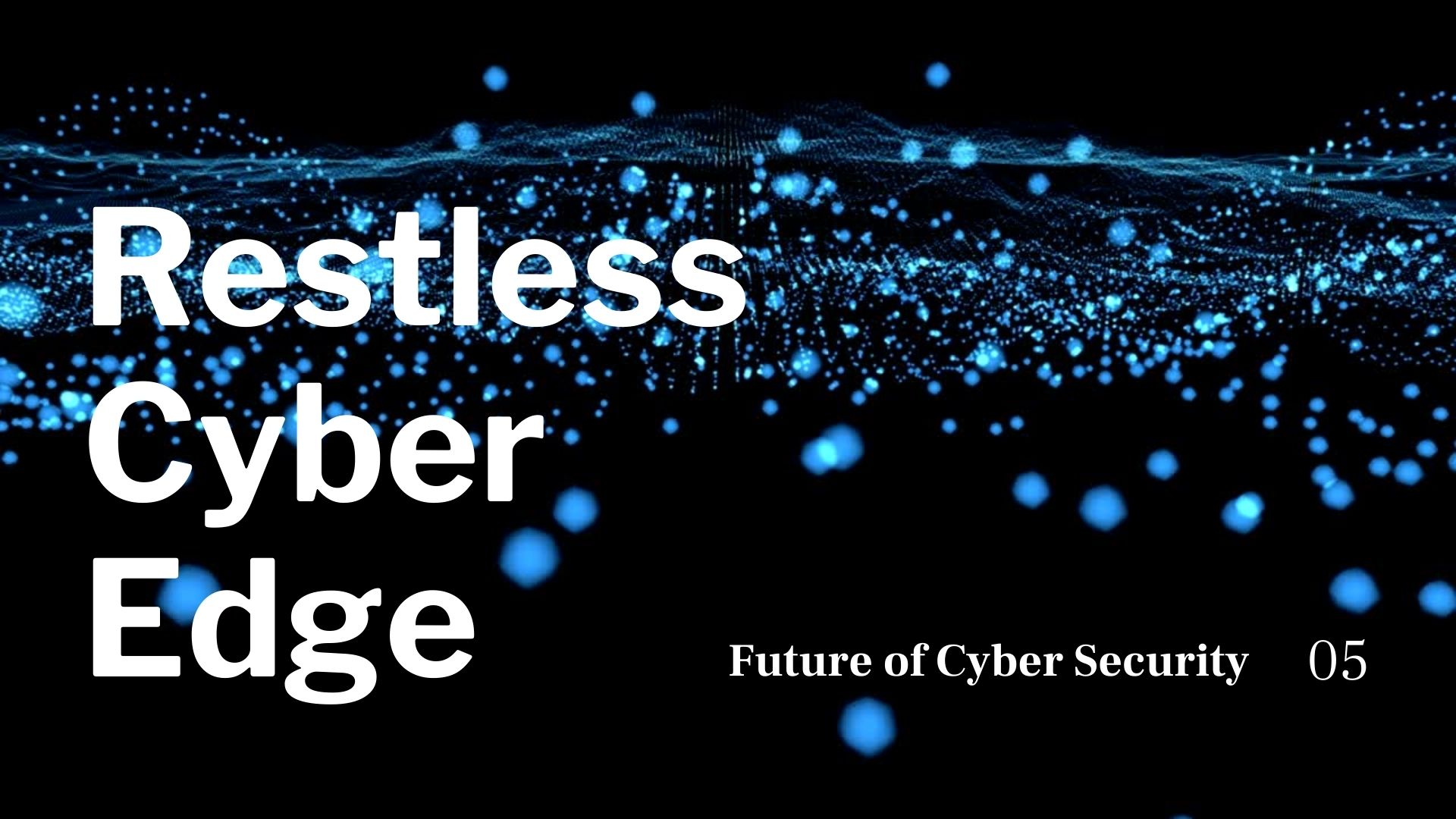Best Cybersecurity Newsletters
April 16, 2025, 15 min read
Who has time to skim through five different websites, stalk infosec Twitter, and decode threat intel reports before they’ve even had coffee? Exactly. No one.
Luckily, the internet has blessed us with an army of smart, slightly obsessive industry experts who do have the time—and they’re generous enough to drop all that gold right into our inboxes. Cybersecurity newsletters are the shortcut we didn’t know we needed: curated insights, big headlines, weird hacker stories, zero effort on our part.
In this blog, I’m breaking down why newsletters are having their main character moment, the actual perks of subscribing to one (or five), and of course, the best cybersecurity newsletters you should be reading right now. Whether you’re into threat intel, policy, memes, or career advice, I got you.
Let’s start with the obvious question: why is everyone suddenly into newsletters again?
Why Are Newsletters Getting Popular?
Remember when newsletters used to be those boring things companies sent out to announce a new printer? Yeah, same. Fast forward to now, and they’re suddenly the cool kid at the content table.
The reason? Information overload. There’s too much stuff out there—too many headlines, too many blog posts, too many “Top 10 zero-day vulnerabilities you missed this week” articles. People are tired. They want the signal without the noise.
Newsletters solve that. They’re curated, clean, and human. Instead of doomscrolling or playing “Which Reddit thread do I trust today?” you get a tight little package of exactly what matters, written by someone who (hopefully) knows what they’re talking about.
Plus, newsletters feel personal. It’s like getting a DM from a cyber-nerd friend who’s like, “Hey, here’s what you should actually care about this week.” And in an industry that changes faster than TikTok trends, that’s kind of priceless.
Up next: let’s talk about why hitting “subscribe” might be one of the smartest cyber moves you make all year.
What Is the Advantage of Subscribing to a Cybersecurity Newsletter?
If you haven’t got a clue about the advantages of newsletters yet… man. Come on. I’d usually say go back and read again, but you’re in luck—I’m in a generous mood today. So here’s the cheat sheet:
- Curated content without the fluff – No more crawling through 30 tabs to figure out what actually matters this week.
- Stay ahead of the curve – Get wind of threats, breaches, and spicy hacker drama before it hits mainstream news.
- Straight from experts – Most of these newsletters are run by practitioners, not marketers. That means real insights, not buzzwords.
- Diverse perspectives – From threat intel to governance gossip, you get a little bit of everything depending on the vibe you’re into.
- Minimal effort, max value – Open inbox. Get smarter. Close inbox. Repeat.
Basically: it’s like upgrading your brain’s RAM without doing any actual work.
Next up? The list you came for. Let’s get into the best cybersecurity newsletters worth your attention.
Best Cybersecurity Newsletters
“breaks knuckles” “rolls up sleeves” Now now, let’s get to them!
A staple in the cybersecurity media diet, Help Net Security has been doing its thing since 1998—yep, back when Windows 98 was still considered “cutting-edge.” This newsletter delivers daily cybersecurity news, expert analysis, research reports, and vendor insights all in one tight, no-BS format. If you want to stay on top of everything from data breaches to threat actor trends to the latest infosec whitepapers, this one’s a solid all-rounder.
Bruce Schneier is basically the Gandalf of cybersecurity. Cryptographer, author, public-interest technologist—this man has been writing and thinking about security since before half the industry even existed. His newsletter is a window into the bigger picture: policy, surveillance, cryptography, and the philosophical “why” behind the tech. It’s less of a “daily update” and more of a “mental gym”—perfect for people who want their infosec with a side of reflection.
APIs are like the backstage passes of the internet—powerful, widely used, and a total mess if not secured properly. This niche newsletter keeps things laser-focused on API threats, vulnerabilities, and defense strategies. Curated by the folks at Escape, it digs into zero-days, design flaws, and case studies, all wrapped in a format that’s easy to follow even if you’re not elbows-deep in JSON every day.
Brian Krebs is the guy who’ll know your company got breached before you do. A former Washington Post reporter turned cybersecurity legend, Krebs investigates cybercrime like a digital Sherlock Holmes. His blog-turned-newsletter dives deep into major hacks, fraud schemes, and the shady corners of the dark web, all written in an investigative tone that hooks you in. It’s not just news—it’s a cyber noir thriller in email form.
Think of Vulnerable U as the existential crisis corner of cybersecurity newsletters. But in the best way. It blends humor, culture critique, and industry insight with a self-aware tone that’s weirdly comforting. Expect posts about burnout, imposter syndrome, and why security people drink so much coffee, all alongside actual, real-world infosec lessons. It feels like therapy…if your therapist also happens to be a security engineer.
From the CyberRisk Alliance comes Daily Scan, a quick, curated collection of top headlines and insights across the industry. The vibe is “get in, get smart, get out”—perfect for mornings when your brain isn’t ready for 6-page PDF threat reports. Think of it as your personal news concierge handing you just what you need to know, minus the mental clutter.
Pulse is one of those newsletters that does the hard work for you—sifting through noise and bubbling up the signals. Expect threat intelligence updates, expert blogs, and occasional interviews or commentary that actually adds value (not just marketing fluff). It has that “smart coworker who drops links in Slack you actually click” kind of energy.
If cybersecurity newsletters had rockstars, Risky Business would be touring stadiums. This long-running newsletter and podcast hybrid—founded by Patrick Gray—combines breaking news with spicy industry commentary, analysis, and interviews. The writing is witty, skeptical, and wildly informative. It’s the kind of newsletter that doesn’t just tell you what happened, but why it matters (and why some people are probably mad about it).
Cloud security is a whole different beast, and this newsletter gets it. Created by Scott Piper, a well-known voice in AWS security, it’s a curated roundup of the best resources, research, tools, and articles on everything cloud-related. It’s especially great for people working in DevSecOps or security engineering roles who need a filtered feed of “what’s hot in cloud this week.”
Digital forensics and incident response (DFIR) isn’t just CSI: Cyber—it’s one of the most technical and fascinating areas of infosec. This Week in 4n6 rounds up tools, blog posts, case studies, and analysis from the DFIR community. Whether you’re deep in memory dumps or just curious about how real investigations go down, this one delivers.
AI and cybersecurity are colliding faster than ever—and not always in a good way. This newsletter zooms in on adversarial machine learning, AI-based threats, and how attackers (and defenders) are using AI. It’s still flying under the radar, but if you want to stay ahead of how the bots are being weaponized, this digest is a must.
ESET, one of the OG antivirus companies, powers this one. We Live Security brings a European flavor to cybersecurity coverage, with global threat trends, original research, and thoughtful editorial pieces. It’s polished, readable, and less clickbaity than some of the bigger sites—perfect if you want smart insights without feeling like you just fell into a Twitter thread.
From the creators of Recorded Future, The Record is basically the New York Times of cybersecurity. Actual journalists report on cybercrime, government policy, ransomware gangs, and more—all with accuracy and depth. They even have a Daily Briefing version if you want the TL;DR. It’s serious reporting without the corporate spin, which is rarer than it should be.
Sophos brings their A-game in this security blog-turned-newsletter. It’s a mix of vulnerability breakdowns, phishing scams, malware writeups, and security awareness content, often written in a conversational tone. Bonus points for their “explain like I’m five” clarity on complex topics—perfect for teams or security beginners trying to get good without the jargon overload.
You’ve 100% landed on The Hacker News if you’ve ever Googled a CVE or zero-day. One of the most visited security news platforms out there, THN is super quick with breaking alerts, breach reports, and security updates. It’s headline-focused and concise, which makes it a solid go-to for skimming what just went down in the threat landscape.
This isn’t your average “what’s happening in security” newsletter—it’s like the off-the-record briefings that analysts whisper about. Created by Thomas Rid (yes, that Thomas Rid), it’s a curated digest of national security, intelligence, and cybersecurity reads. It’s academic, sharp, and tailored for folks who like their cyber with a side of geopolitical depth. Expect links you won’t find in the usual infosec echo chambers.
Brought to you by CSO Online, this newsletter caters to the people making the big security calls—CISOs, security architects, and risk leaders. It blends executive-level insights with practical threat reports, incident response tips, and policy updates. If you’re managing teams or want a strategic take on the latest attacks, this one’s built for the boardroom and the war room.
Want to understand security like a startup founder or VC? Return on Security—run by the cybersecurity economist Mike Privette—breaks down infosec news with a clear eye on business, product, and funding. It tracks new startups, investments, and the shifting economy of cyber, with just enough sass to keep it fun. It’s like TechCrunch for security nerds.
One of the OGs in cybersecurity media, Infosecurity Magazine brings classic journalism energy to this chaotic space. Their newsletter distills major stories, expert takes, and event coverage into clean, engaging emails. It’s trusted, balanced, and comes with that old-school credibility that’s rare in the hot-take era. You’ll find everything from technical breakdowns to legal and compliance angles.
This newsletter feels like a well-researched field report from someone with boots on the ground. TripWire’s State of Security covers risk management, compliance, vulnerability research, and threat detection—especially useful for enterprise teams. Their writeups are deep, technical, and refreshingly no-fluff, backed by years of TripWire’s experience in the integrity monitoring game.
Imagine a weather forecast, but for cyber threats. That’s the energy behind the SANS ISC Diaries. This long-standing daily diary tracks observed malware behavior, attacker trends, and security anomalies in the wild. Maintained by volunteers from SANS, it’s super technical and super valuable—ideal for SOC analysts, blue teamers, and anyone living the IR life.
Part of the FedScoop family, CyberScoop lives at the intersection of cybersecurity, policy, and government. It’s especially strong on federal cyber initiatives, national threat actors, and big tech regulations. Think of it as a lens into what D.C. is whispering about when it comes to breaches and digital defense. Also, bonus: it’s slick and super readable.
This newsletter leans into the global nature of cybersecurity threats. Curated by a community of security pros, it tracks attacks, actors, and incidents from all over the world—not just the typical U.S. headlines. It’s a reminder that ransomware, phishing, and supply chain breaches are everyone’s problem. Bonus: it often highlights regional stories most newsletters miss. Also, I mean, the joke is just too good to miss.
Security Boulevard is like the Reddit of cybersecurity blogging—tons of voices, opinions, and ideas, all funneled into one feed. Their newsletter pulls the top pieces from their contributor network, covering AppSec, DevSecOps, zero-trust, and more. It’s great if you want diverse takes or like exploring how different corners of the industry approach the same threats.
If SANS ISC is the diary, NewsBites is the headline roundup—quick, smart, and editorialized. It’s co-edited by legendary names like Johannes Ullrich and Stephen Northcutt and delivers twice-weekly summaries of top security stories. Each item comes with commentary that’s refreshingly candid (and occasionally spicy). TL;DR: infosec news with actual expert context.
From the team behind Industry Dive, Cybersecurity Dive provides clean, crisp coverage tailored for decision-makers. It focuses on the business side of cybersecurity—cyber insurance, SEC rules, CISO priorities, vendor drama—but without drowning you in buzzwords. It’s polished and fast to skim, making it perfect for execs or policy folks trying to stay sharp without burning time.
Curated by Thom Langford, CyberWeekly is part newsletter, part manifesto. It mixes weekly commentary, curated reads, and behind-the-scenes reflections on everything from boardroom politics to the ethics of cybersecurity. It’s human, opinionated, and totally unafraid to ask, “Are we even doing this right?” If you like your infosec content thoughtful and with a personal twist, this one’s a gem.
Certification prep but make it cool. CerMike focuses on helping folks break into or level up in security through certifications like CISSP, Security+, and CEH. The content blends exam tips with industry context so it’s not just “memorize this port number,” but “here’s why this matters in real life.” Whether you’re new to security or grinding through the cert circuit, this is a useful (and motivational) inbox boost.
The internet’s original drama club for security bugs. Full Disclosure is the legendary mailing list where researchers drop vulnerability details, exploit code, and sometimes spicy vendor beefs. It’s raw, technical, and occasionally chaotic—but a must-follow for anyone who wants to see disclosures in real-time and hear about issues before they hit mainstream media.
This newsletter does exactly what it says on the tin: it gives you the week’s security highlights, fast. It’s curated, concise, and easy to skim—great for staying informed without rage-scrolling Twitter. It pulls in top news, tools, research, and even memes (because balance). Perfect for busy pros who want quality over quantity.
The Center for Internet Security newsletter brings the authority of a nonprofit that literally sets the security benchmarks most organizations follow. From their CIS Controls to their work on critical infrastructure, this newsletter is all signal, no noise. Whether you’re into policy, frameworks, or just trying to harden your systems the right way, it’s a dependable source rooted in best practices.
Daniel Miessler’s Unsupervised Learning is part newsletter, part digital dojo for deep security thinkers. It blends curated security stories, philosophical musings, and Daniel’s own takes on tech, AI, and human behavior. If you like newsletters that make you feel smarter after reading them (without putting you to sleep), this one’s a power-up for your brain.
This Week in Security is what you’d get if a security team wrote a weekly ops report for the entire internet. Focused, factual, and technical—but without being dry—it covers vulnerabilities, breaches, new tools, and noteworthy trends. Whether you’re managing a SOC or just trying to stay patched and ahead of the curve, this newsletter delivers the goods.
More community than content dump, The Cybersecurity Club serves as a knowledge hub for students, career switchers, and upskillers. Expect career tips, beginner-friendly resources, and conversation starters that help you feel less lost in the infosec maze. It’s welcoming, valuable, and refreshingly low on the ego.
A newer face on the scene, the Hive Five Newsletter buzzes with a mix of cybersecurity updates, infosec memes, and curated reads. It has personality in spades and doesn’t take itself too seriously—which is kind of what you need when your job involves analyzing ransomware all day. Definitely one to watch as it evolves.
SentinelOne’s content hub is sharp, much like their tech. Their newsletter blends the latest threat intel with product-focused content that doesn’t feel like a sales pitch. You’ll get breakdowns of malware trends, APT behavior, and real attack forensics—basically a peek inside the minds of their researchers. A strong pick for folks who want vendor-backed analysis that still feels objective.
With a clear, professional tone, SecurityWeek’s Daily Briefing offers a rapid scan of everything that matters: from cyberattacks and legislation to big tech moves. It’s like a well-prepared press briefing but for security professionals. The brevity and structure make it easy to integrate into your morning scroll.
Focused on the financial services and advisory sectors, AdvisoryWeek tracks risk, compliance, and threats that target high-value, regulated environments. While not pure infosec 24/7, it’s deeply relevant for professionals at the crossroads of cybersecurity, finance, and enterprise risk. Think wire fraud, social engineering, SEC regs—it’s all here.
If you’ve been in cybersecurity longer than five minutes, you’ve heard of Dark Reading. It’s the god-tier trade publication in infosec—home to seasoned reporting, technical blogs, op-eds, and industry news. Their newsletter is like a greatest-hits album of the day’s best stories. Still sharp, still relevant, still a must-read.
Clint Gibler’s TL;dr sec is a cult favorite in security circles, and for good reason—it distills top-tier AppSec, DevSecOps, and cloud security content into readable, actionable nuggets. With thoughtful commentary, memes, and links that actually add value, it’s perfect for security engineers and curious builders alike.
This one’s for the startup crowd and VC lurkers. Security, Funded covers funding rounds, new security ventures, and the business of building cybersecurity companies. If you’re dreaming of launching your own cyber startup—or just want to know where the money’s moving—this newsletter gives you the inside scoop, minus the Silicon Valley hype.
One of the most professional and consistent voices in the industry, The CyberWire combines audio, newsletters, and daily recaps. The newsletter mirrors the podcast with high-level summaries of threats, cyber policy moves, and research. It’s crisp, non-alarmist, and an easy way to stay looped in before your second cup of coffee.
A rising indie gem, Soho’s News is a digest of weird hacks, low-key threat actor campaigns, and quirky infosec stories that don’t always make it to the big blogs. It has a tone that feels more Discord than newsroom, but that’s the charm. Great for readers who like niche finds and a bit of flavor.
While Sprinto is a compliance automation platform, their content is surprisingly human. Their newsletter offers takes on SOC 2, GDPR, ISO 27001, and the shifting world of SaaS security compliance—without sounding like a legal memo. It’s useful for founders, CISOs, or anyone who wants to make compliance not suck.
HackRead is like the tabloids of the cyber world—but in a good way. They break stories fast and aren’t afraid to dive into the edgy stuff: hacktivism, cybercrime, digital surveillance. While not as technical as some, it’s compelling and often scoops stories that get picked up later by bigger outlets.
Okay, now we covered all of our favorites. But which one or ones are best for you?
What Kind of News Do You Want?
Alright, let’s be real—how you get your cybersecurity news matters just as much as what the news actually is.
Do you want a friendly voice that feels like your tech-savvy buddy sliding into your inbox with “you gotta see this”?
Or maybe you prefer something polished and professional, like a virtual press briefing in suit-and-tie energy.
Or hey, no shame if you just want pure meme-fueled chaos with a side of CVE updates. (Honestly? Same.)
Here’s the thing:
- Some newsletters keep it casual and fun—light commentary, a few jokes, links you actually want to click.
- Others are dead serious—no fluff, no filler, just sharp analysis and threat reports.
- Some mix it up—think “funny but terrifying,” like a clown car filled with zero-days.
The point is: you’ve got options. Pick a tone that matches your attention span, mood, or threat level. Cyber news doesn’t have to be dry—it just has to be you.
Final Thoughts
At this point, if you’re still newsletter-less… I don’t know what to tell you. Actually, wait—I do: fix that.
There’s literally no downside to letting a few smart folks do the heavy lifting and deliver curated cyber news straight to your inbox. Whether you’re deep in the trenches of threat hunting or just trying to keep up with industry shifts between meetings (or memes), there’s a newsletter out there that’ll fit your vibe.
So go ahead. Subscribe to one. Or five. Or a thousand. (Okay maybe not a thousand, unless you want your inbox to stage a coup.)
Either way, future-you will thank you—and probably forward half of them to your coworkers like a hero.




























